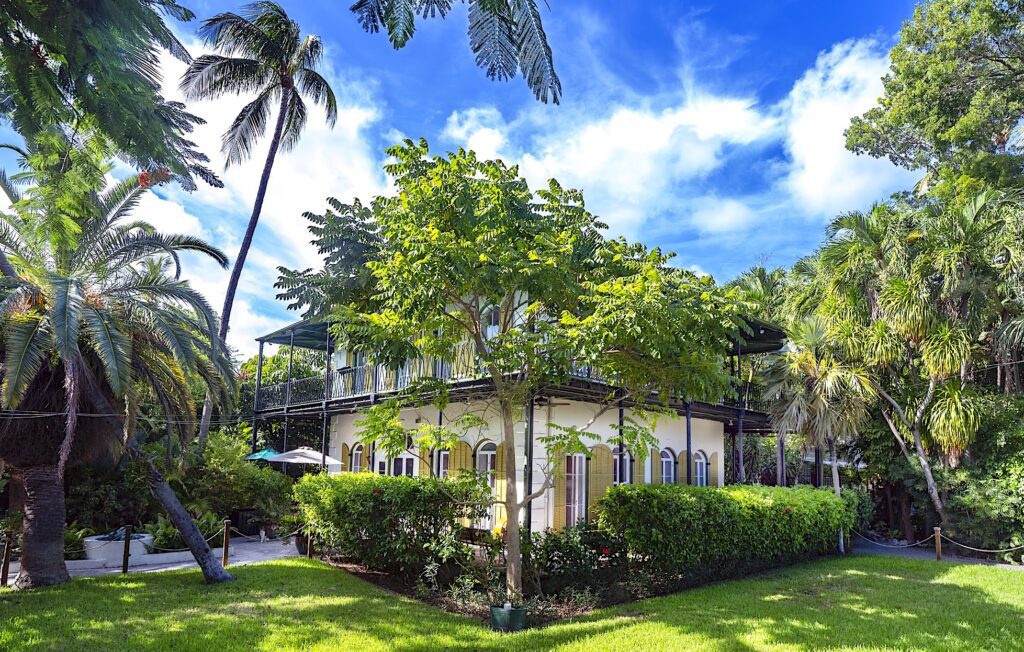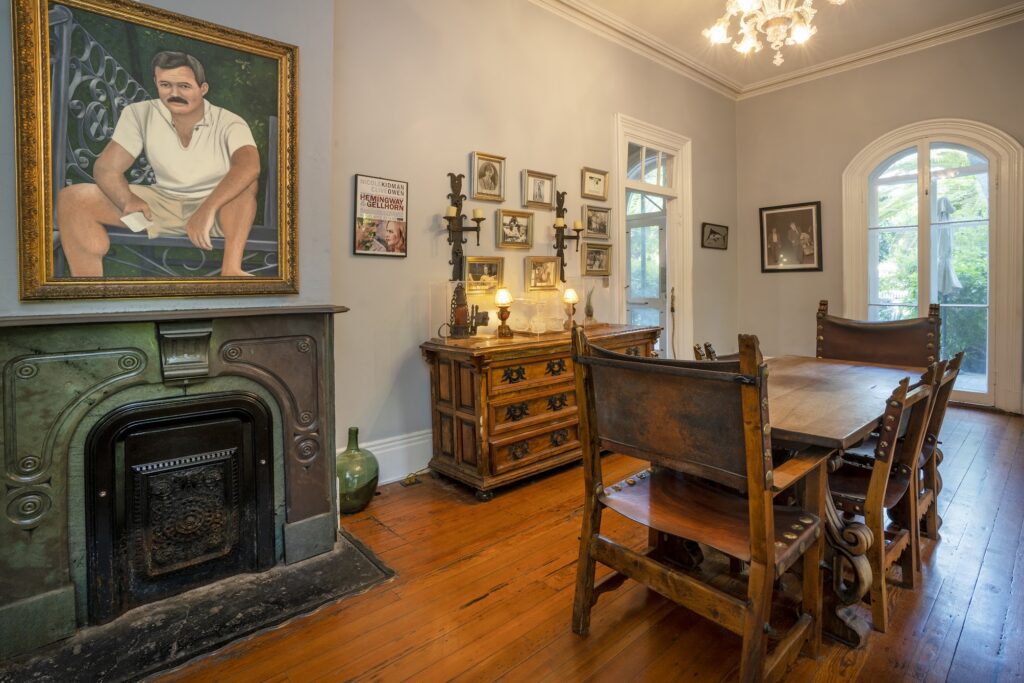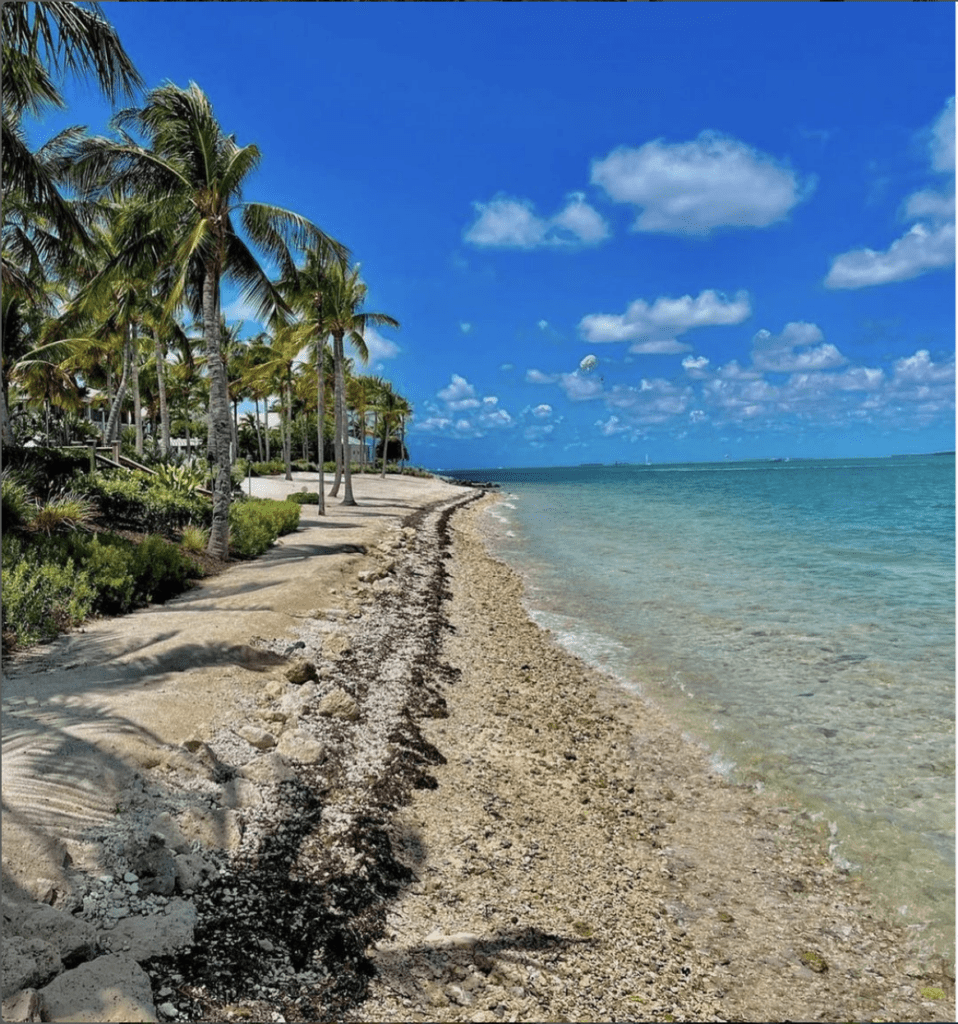InCountry: Key West, Hemingway’s Haven
By • January 10, 2024 2 838

By Trish Foxwell
One of Florida’s most unique and appealing islands, located on the state’s southernmost tip, is the famed Key West, with its abundant literary and presidential history and many outstanding outdoor adventures. After all, singer songwriter Jimmy Buffett and literary legends Ernest Hemingway and Tennessee Williams all fell under its spell.
For the traveler, Key West is a unique mix of beautiful weather, fascinating history and a host of exceptional outdoor activities. Its compact size allows easy exploration and puttering. Old Town Trolley Tours provide a 90-minute hop on/hop off tour, just the way to skirt around town and take in its charms.
Here are some other “Key” highlights: The Ernest Hemingway House on Whitehead Street put Key West on the literary map. A tour through the lovely Spanish Colonial house designed by marine architect Asa Tift allows visitors to see where the acclaimed writer lived and worked from 1931 to 1961. Remarkably, the estate where he penned “A Farewell to Arms” and “The Snows of Kilimanjaro” is largely as Hemmingway left it, as one of the most important literary hideaways in the United States. For any Hemingway fan, a visit is a must. Tours are offered every day throughout the year.
A walk through the house reveals many of Hemingway’s most prized personal possessions including his African hunting trophies. Everything on display belonged to him. The carriage house, right behind the main house, was his literary sanctum and proves the most intriguing spot on the tour. He spent most of his mornings working on his novels and stories first in longhand and then on the Royal typewriter that sits on his desk nearby. Photographs and books surround the intimate room’s interior. Hemingway recalled how special the writing studio was to him: “I wrote the ‘Snows of Kilimanjaro’ in the studio and by the time I finished, I had put into the material four novels, distilled and compressed — nothing held back…”

Interior of Hemingway home. Courtesy Trish Foxwell.
If his mornings were spent writing, he spent afternoons on his boat, “The Pilar,” with his friends Charlie Thompson and Joe Russell, on fishing expeditions and sometimes stopping in the original Sloppy Joe’s for an afternoon drink. When walking around the grounds, be on the lookout for one of the six-toed cats that freely roam the property. A ship’s captain gave Hemingway a cat as a pet and in no time the colony of cats grew into what it is today.
The house, largely saved due to his son’s efforts after Hemingway’s death, is a National Historic Landmark and continues to be one of the area’s most visited sites.
Playwright Tennessee Williams also made Key West his home from 1941 until his death in 1983. His cottage, which he called the Mad House, is privately owned and was his literary hideaway where he worked on “Summer and Smoke” and “Night of the Iguana.” Williams arrived in Key West just 10 years after Hemingway put down roots. Like Hemingway, Williams loved the warm weather and remarked in an interview, “I could swim in the winter, and I came to Key West. It was the southernmost point, and I was immediately enchanted by the place.” Fellow writer Truman Capote was often a guest at the hidden hideaway. The Friends of the Libraries USA donated a plaque outside the cottage with the quote, “I have always depended on the kindness of strangers,” from Williams’s “A Streetcar Named Desire.”

Key West shoreline. Instagram photo.
For a peek into presidential history a visit to the Truman Little White House is a must. Originally a naval station during the Spanish-American War, Truman visited and stayed in the house 11 times, beginning in November 1946 until March 1952. When the chilly weather hit Washington, Truman packed his bags and left the Oval Office for Key West. He loved to swim, go for outings on his yacht, “The Williamsburg,” and play poker with his buddies. Other commanders-in-chief who visited the house included Dwight Eisenhower in 1955 and John Kennedy in 1961 and 1962 during the Cuban Missile Crisis.
Outdoor excursions abound in and around Key West. No visit to the island is complete without taking in a sunset from Mallory Square or going snorkeling – sometimes with dolphins – in the crystal waters on the Coral Reef. For birding and nature enthusiasts, Fort Zachary State Park is a stone’s throw from the Hemingway House. A variety of species, from the Magnificent Frigate Bird, Black Skimmer to the Painted Bunting, can be glimpsed. Be sure to pack binoculars and a camera on this outing.
Accommodations
Lodging in Key West ranges from intimate conch cottages to full-scale resorts and hotels. The Casa Marina Hotel, a Hilton Curio Collection, is one of the area’s most historic properties. Built by railroad tycoon Henry Flagler in 1920, the lush property recently completed a multi-million-dollar renovation. Its inviting Spanish Mediterranean architecture makes it one of the area’s loveliest places to stay. The hotel was a favorite of Hemingway’s who often dropped in for lunch, usually attired in sandals and shorts. Other choices for lodging include The Lighthouse, a Kimpton property, and the Pier House among others.
Getting There
United Airlines and American Airlines offer nonstop flights to Key West, United from Dulles and American out of Reagan-Washington National Airport. For info, call 1-800-FLA-KEYS.


A few items: One, Hemingway lived there from 1931 until 1939, when his second marriage dissolved and he moved to Havana. Two, hardly anything in the house, if anything, belonged to him (his sons are on record as to that fact). Lastly, the six-toed cats are NOT descendants of cats he owned while he lived there (the “ship’s captain” story is BS, made up by the tour guides). He DID own cats in Havana but never in Key West. I can show you newspaper clippings from the 1960s where his widow, sons and friends are upset by all the BS stories created by the person who bought the house and made it into a museum.
loved it I even worked there with leaping lizards tree service around 1987